Myobrace® for Teens Stage 1 - T1
Establish nasal breathing and habit correction
The T1 focuses on establishing nasal breathing and initial myofunctional habit correction. It is soft and flexible, which gives the best compliance while adapting to any arch form and malocclusion. It has small breathing holes to establish continuous nasal breathing and myofunctional features to promote correct habits. Move to the T2 when the T1 is staying in overnight and nasal breathing has been established.
Design Features
The design features of the T1 are suited to establish nasal breathing and the initial correction of myofunctional disorders in the developing permanent dentition.
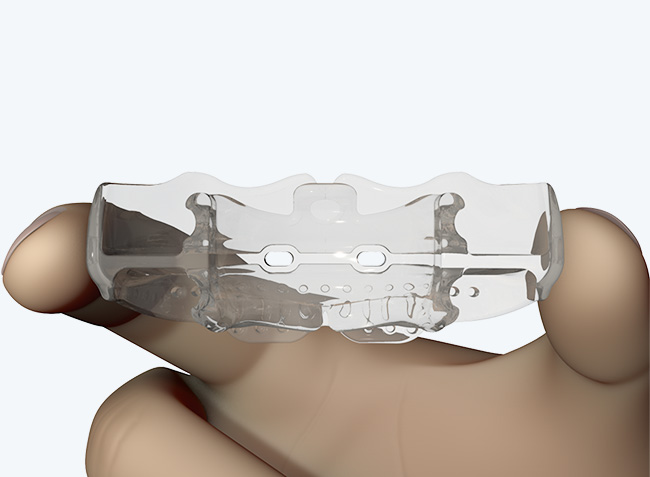
Flexible material
makes it a comfortable starting appliance, able to adapt to any arch form and malocclusion.
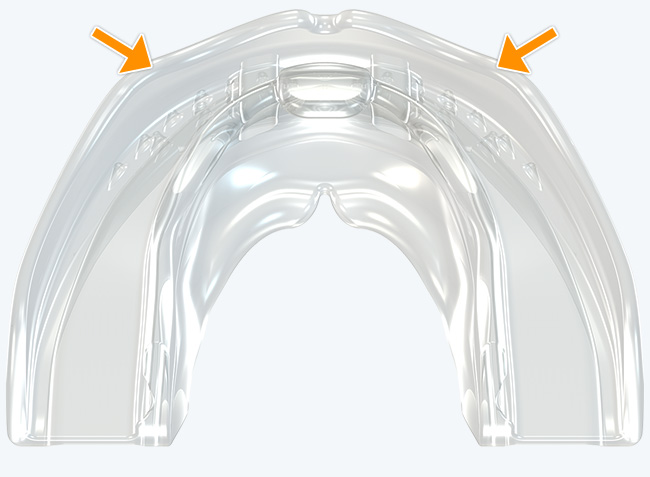
Robust anterior arch form
to impart more force on the anterior teeth for better arch development.
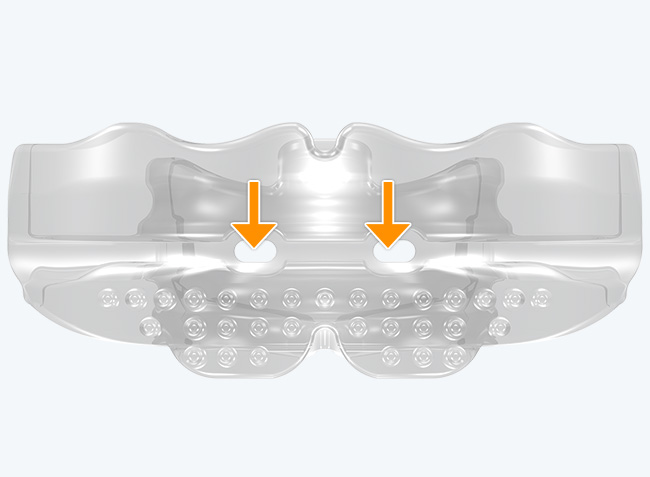
Small breathing holes
help to establish nasal breathing.
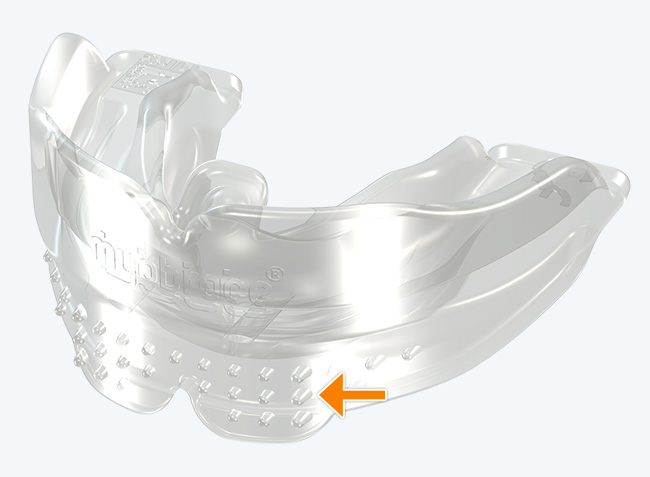
Lip bumper
discourages overactive lip muscles during a reverse swallow.
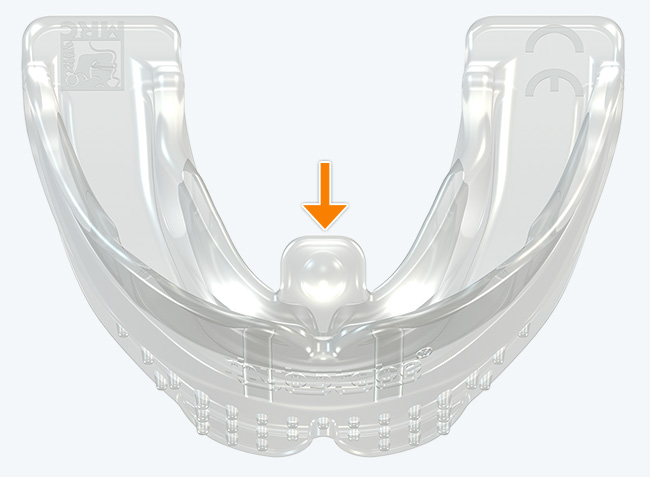
Tongue tag
encourages correct tip of the tongue positioning.
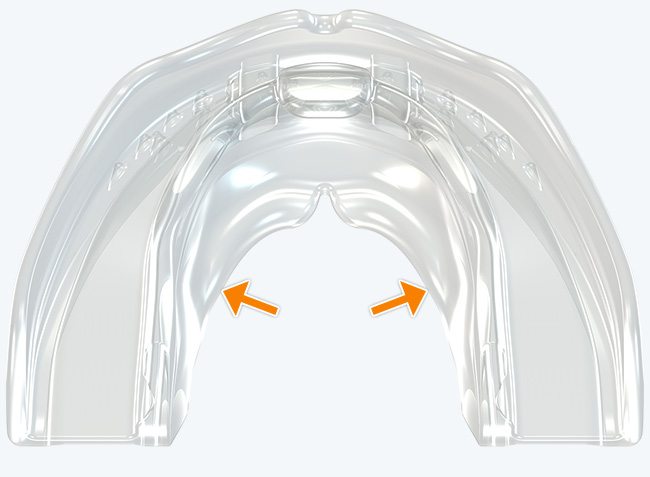
Tongue elevator
encourages the body of the tongue to rest in the roof of the mouth.
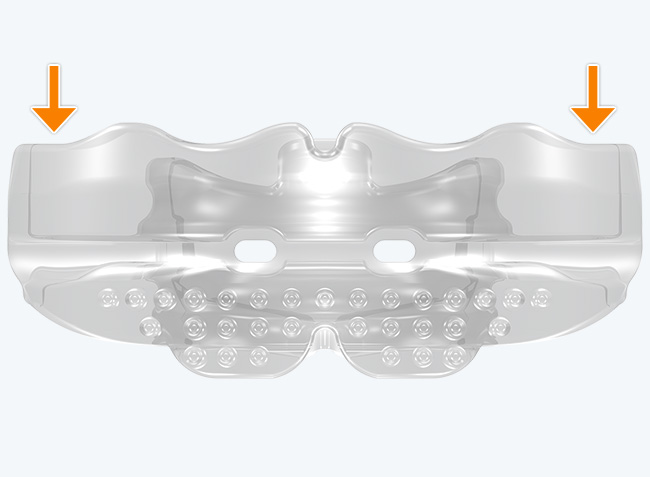
High sides
hold the soft tissues away, promoting arch development while optimising appliance retention.
Directions for Use
The Myobrace® appliance is to be used for one to two hours each day, plus overnight while sleeping. The patient's teeth may become slightly sensitive in the early stages of treatment. This is quite normal, however, if pain becomes excessive, decrease application time with the aim to build it back up once the appliance is accustomed to and sensitivity subsides.
Step 1
Hold the Myobrace® with the tongue tag facing up.
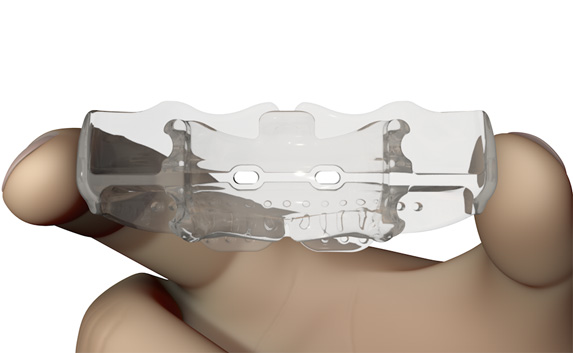
Step 2
Place the Myobrace® into your mouth.
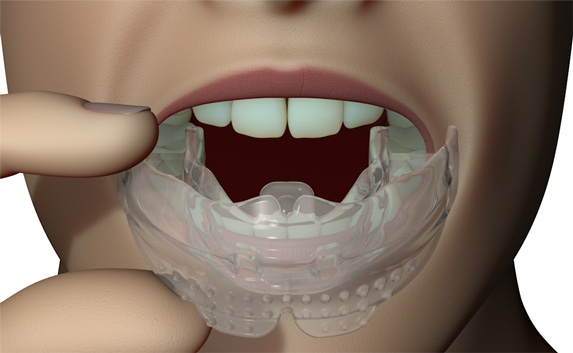
Step 3
Keep your tongue positioned on the tongue tag.
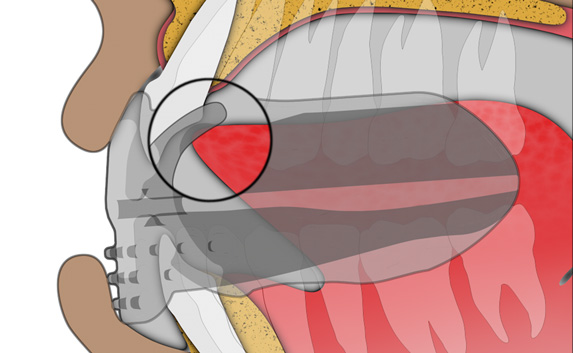
Step 4
Close down on the Myobrace® and feel it working to align your front teeth and jaws.
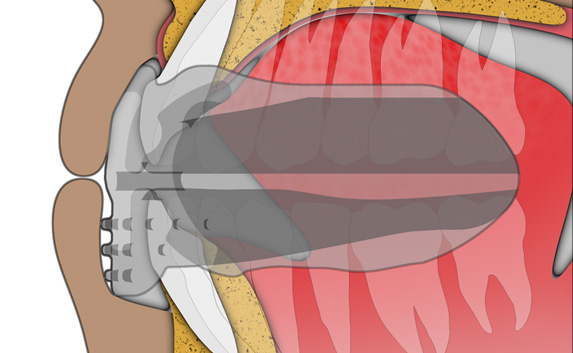
Step 5
Keep your lips together and breathe through your nose.
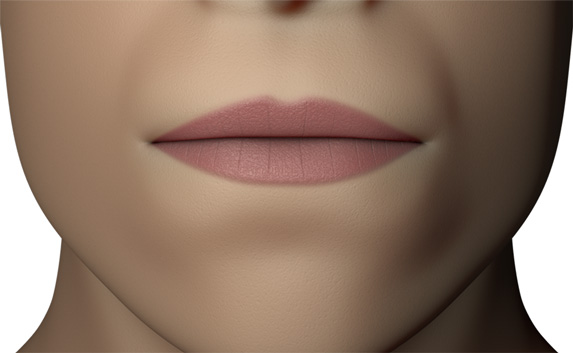
Cleaning the Appliance
The Myobrace® appliance should be cleaned under warm running water every time the patient removes it from their mouth.
Use Myoclean™ tablets to thoroughly clean twice a week. Myoclean™ is the recommended cleaning agent for all MRC appliances.
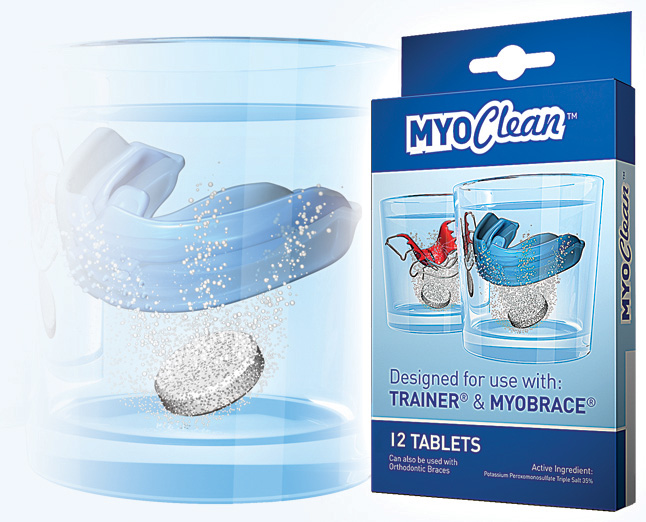
Case Studies
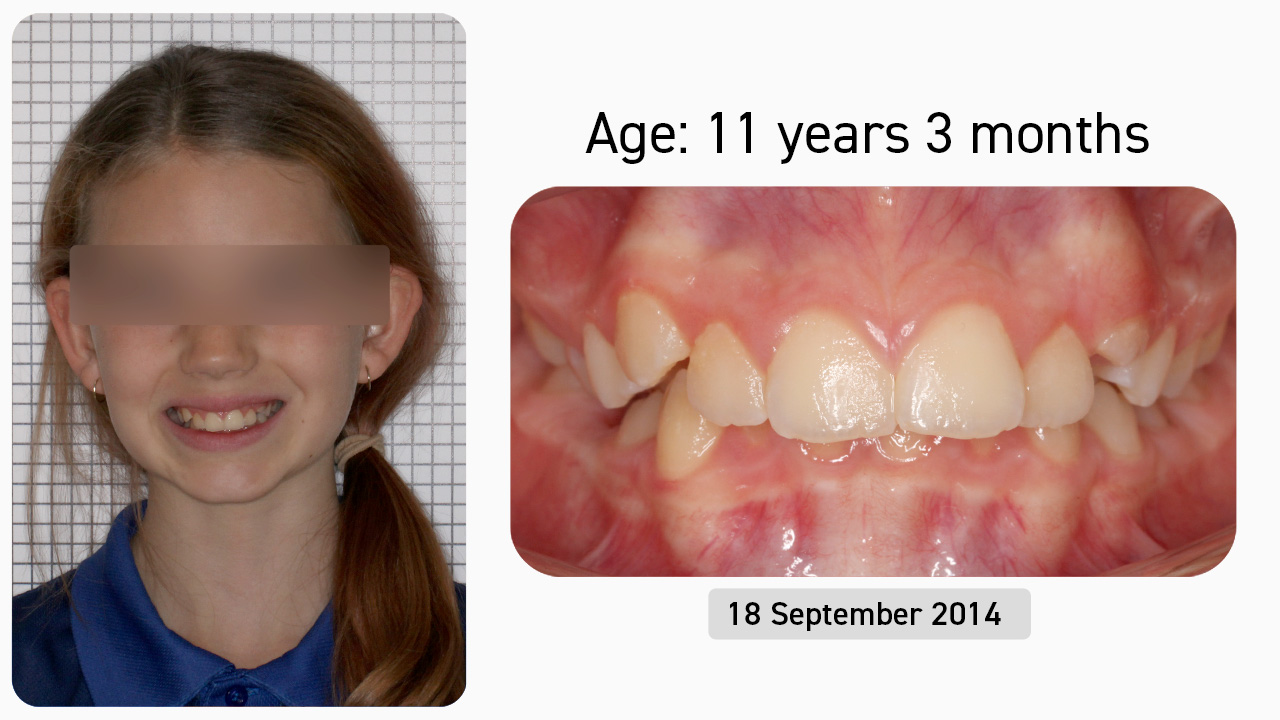
Case Study 1
This 11-year-old female patient presented with the chief complaint of crowded teeth and wanting to avoid braces. After being presented with the various treatment options, the decision was made to undertake Myobrace® treatment. This involved the use of a series of Myobrace® appliances, in conjunction with the BWS arch expansion appliance and the Myobrace® Activities.
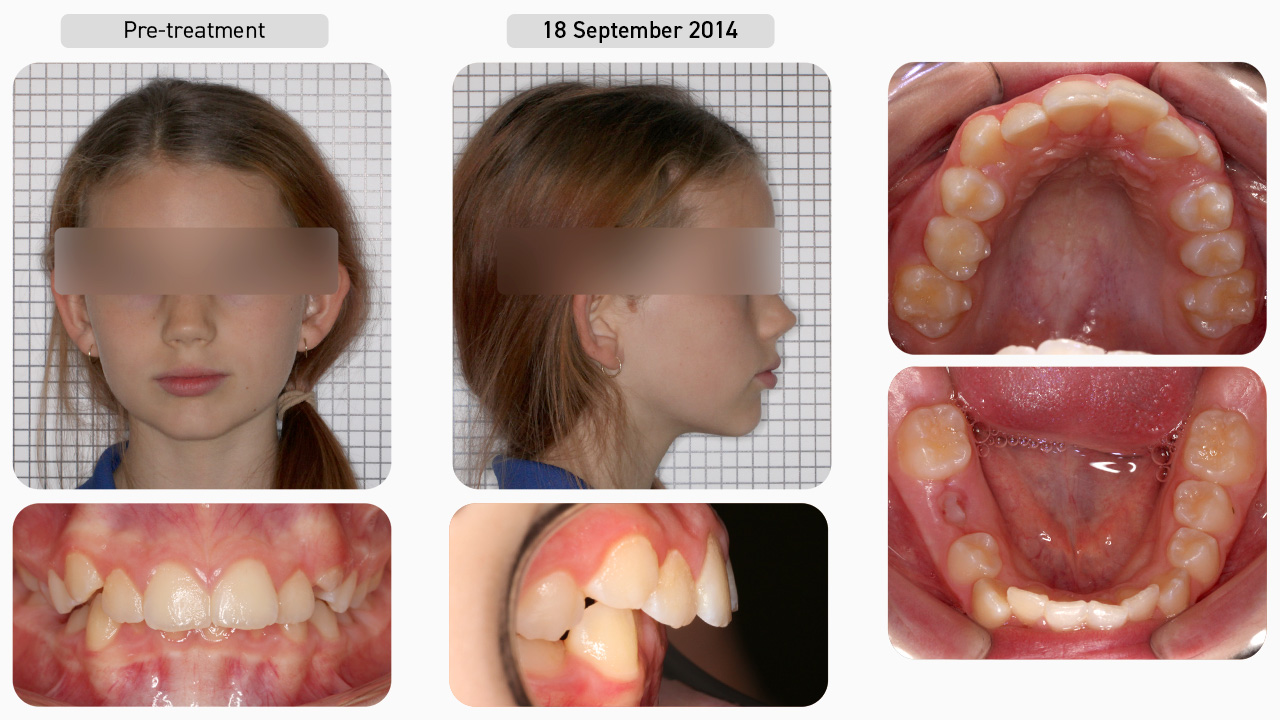
Pre-treatment
Conducting a Myofunctional Orthodontic Evaluation (MOE), we documented that this patient had moderate dental crowding with narrow and flattened arches, as well as a retruded mandible. There was also a deep overbite and moderate overjet. Her poor habits included mouth breathing with low tongue posture and a severe reverse swallow. She also had a history of thumb sucking as a child. Since she was in the developing permanent dentition, this patient was suited to the Myobrace®for Teens series.
Dental Progression
She started with the T1 appliance to establish nasal breathing and begin the correction of myofunctional habits. Two months later, her breathing function had improved, and she was consistently retaining the T1 overnight, so she progressed onto the T2 appliance to focus on arch development and continued habit correction. Since the patient was above the age of eight, the decision was made to use the BWS for extra arch development. Note that despite the overjet, we still developed the upper arch as the focus at this stage is on improving room for the tongue, not focused on the teeth. The BWS must be combined with a first stage appliance, so the T1 was reissued to the patient.
Dental Progression
The BWS generally requires four months of expansion, but due to rapid progress, only two months of expansion was needed. The wire was then removed and the patient was reissued the T2 appliance. A few months later, the patient was issued the T3 appliance for further dental alignment. As the upper arch was still slightly underdeveloped, the decision was made to enter a second round of BWS expansion to develop the upper arch and create more space for the tongue and the upper left canine. With the BWS back in, the patient was issued the T1BWS appliance, which is the preferred appliance to use with the BWS.
Dental Progression
Following the second round of BWS expansion, the patient was reissued the T2 appliance. Once the arches were nicely developed and her habits largely corrected, the patient was moved on to the T3 appliance for further dental alignment and, finally, onto the T4 appliance for retention.
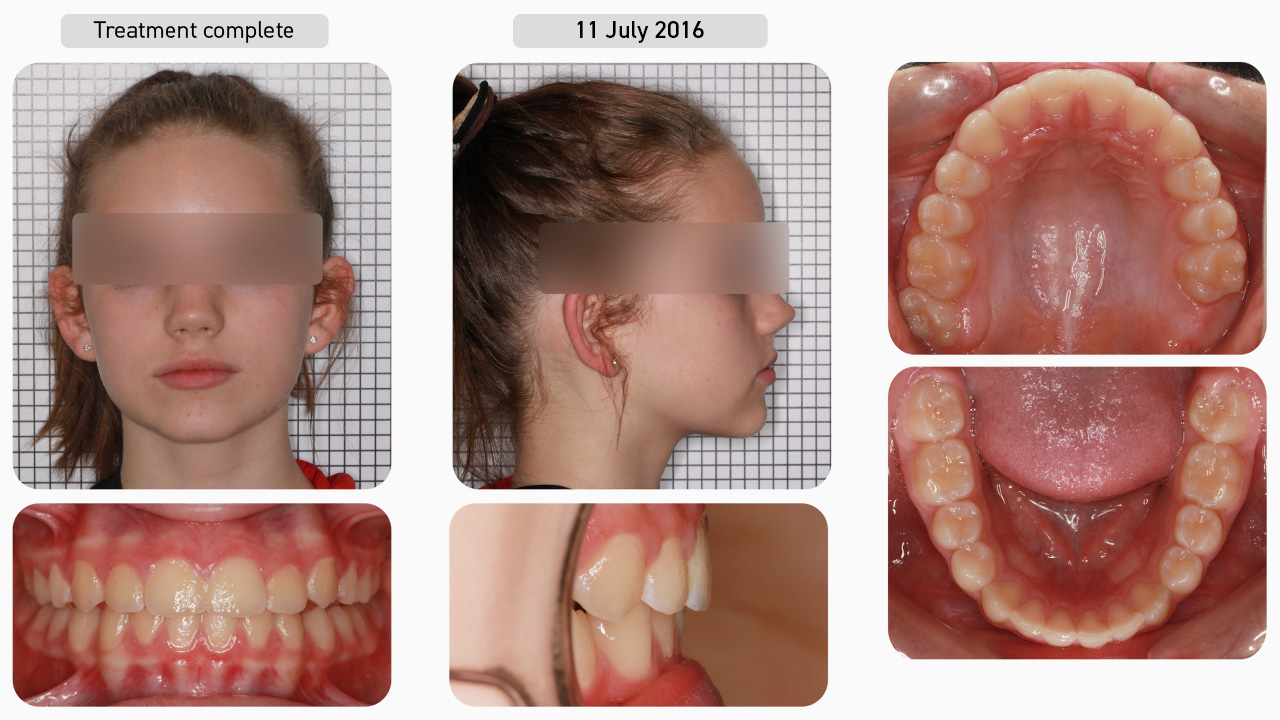
Treatment Complete
This patient had less than two years of treatment. Once the goals of Myobrace® treatment had been achieved (correction of breathing and myofunctional habits, arch form and dental alignment), the patient entered into the retention phase. The T4 appliance was issued to retain the arch form, alignment and habits, so that she can continue to develop correctly into the future.
Facial Progression
Once breathing and myofunctional disorders have been corrected, the development of the face continues in the correct downward and forward direction. The mandible has moved forward, which has positive effects on the breathing patterns, while the labiomental crease has shallowed as a result of correcting swallowing function.
Treatment Summary
Using the Myobrace® appliances in conjunction with BWS arch expansion and the Myobrace® Activities, we have helped the patient to establish nasal breathing, correct her myofunctional habits and, therefore, achieve natural alignment of the teeth. In Myobrace® treatment, we are not concerned with dental ‘perfection’ as we are looking for natural alignment, occurring with habit correction. With the correct breathing and myofunctional habits maintained, we can expect further improvements in the teeth and jaws as the patient continues to develop. For example, note that the overjet reduced further even after treatment was complete, as can be seen in the one and a half year retention check photos.

Retention
The patient returned for a retention check appointment approximately one and a half years after treatment was complete and the result has been maintained without the use of any fixed retainers. The arches are broad and round, the deep bite has opened up and the overjet has reduced. With the correct breathing and muscle habits continued, we expect this stability to be maintained.
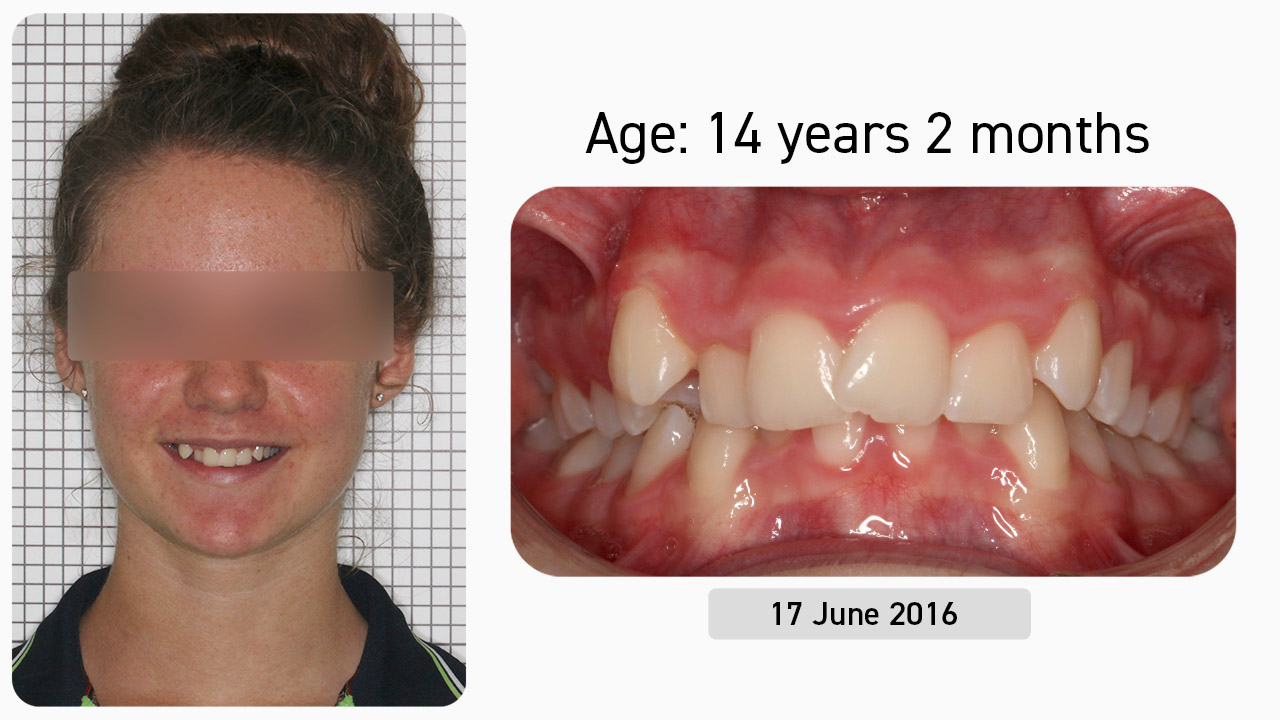
Case Study 2
This 14-year-old female patient presented with the chief complaint of crooked teeth. She was seeking a second opinion after an orthodontist recommended premolar extractions and braces. Given that her main concern was the protruding upper right canine which would “stick out” as she smiled, she wanted an improvement in the alignment of her upper front teeth without the use of braces. After being presented with the various treatment options, the decision was made to undertake Myobrace® treatment, involving the use of a series of Myobrace® appliances, the Myobrace® Activities, and given the severity of the presenting malocclusion, the use of the BWS arch expansion appliance.
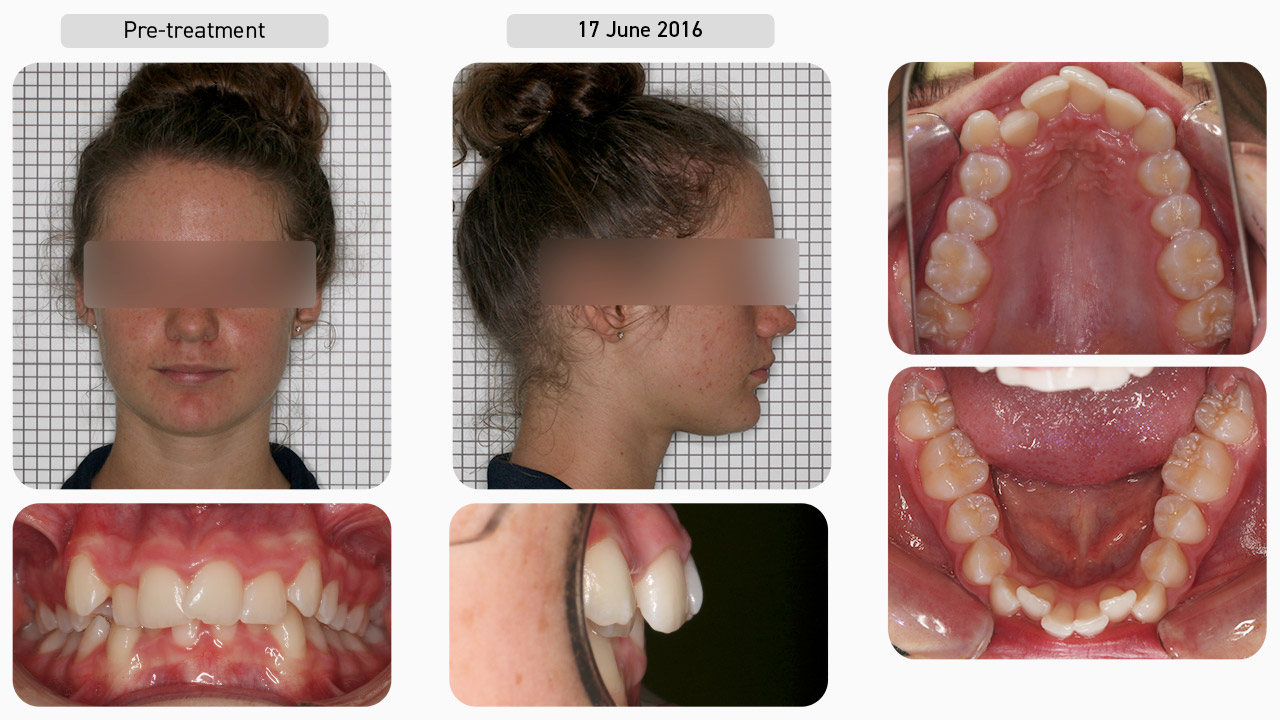
Pre-treatment
Using the Myofunctional Orthodontic Evaluation (MOE) form, we documented that this patient had underdeveloped upper and lower jaws with moderate to severe dental crowding. The upper arch was severely narrow and an hourglass shape, with an almost completely blocked out upper right canine. The lower arch was also very narrow and flattened with all of the posterior teeth tipped in. There was also a deep bite and overjet. This patient was a snorer and her poor habits included mouth breathing with low tongue posture and a severe reverse swallow. Since she was in the permanent dentition, ordinarily this patient would be treated with the Myobrace® for Teens series. However, this patient preferred the K1 (large) appliance over the T1 appliance due to comfort, and so her treatment began with the Myobrace® for Kids series.
Dental Progression
She started with the K1 appliance to establish nasal breathing and begin the correction of myofunctional habits. Three months later, her breathing function had improved and, as she was consistently retaining the K1 overnight, she progressed onto the K2 (large) appliance which focuses on arch development and continued habit correction. You can already see the improvement in the arch form and the alignment of the upper and lower anterior teeth after only three months of treatment. Patients in the permanent dentition routinely require upper arch expansion to not only create space for the teeth, but more importantly, to move the teeth out of the way to facilitate correct tongue posture in the roof of the mouth. Therefore, the decision was made to use the BWS. As this must be combined with a first stage appliance, the K1 (large) was reissued to the patient.
Dental Progression
Note that after two and a half months of BWS expansion, the upper first molars started to distalise. When this occurs, the wire is removed to allow the molars to settle back and the patient was reissued the K2 appliance. Two months later, the patient was ready to enter a second round of BWS expansion to further develop the upper arch and improve function, so the K1 was reissued. Three months later, BWS expansion was complete, and the patient was issued the T2 appliance. Note the slight increase in overjet following each round of BWS expansion. This is favourable as it allows the retruded lower jaw to progressively translate forwards as the upper arch is developed.
Dental Progression
Once the arches were nicely developed and her myofunctional habits largely corrected, the patient moved on to the T3 appliance for further dental alignment and, finally, onto the T4 appliance for retention. Nine months later, we can see that her teeth have remained stable without any fixed retainers.

Treatment Complete
It is important to note that in Myobrace® treatment, we are not concerned with dental ‘perfection’ as we are looking for natural alignment of the teeth occurring in conjunction with habit correction. Once the goals of Myobrace® treatment have been achieved (establishing nasal breathing, correcting the myofunctional habits and attaining good arch forms), the patient enters into the retention phase. The T4 appliance was issued in order to retain the arch form, alignment and habits.
Facial Progression
Now that the breathing and myofunctional disorders have been corrected, the patient is no longer snoring, and improvements can be seen in the facial profile. The mandible has moved forward, the airway has improved, and the labiomental crease has shallowed as a result of correcting function.
Treatment Summary
Using the Myobrace® appliances in conjunction with the BWS arch expansion appliance and the Myobrace® Activities, we have helped the patient establish nasal breathing, correct her myofunctional habits and, therefore, achieve natural alignment of the teeth. Look at the improvement in lower anterior alignment without any fixed appliances in the lower arch, the result of correcting function. Both the upper and lower arches are broader and rounder, the deep bite has opened up, and the overjet reduced. With the correct breathing and muscle habits maintained, we expect good stability of the result.
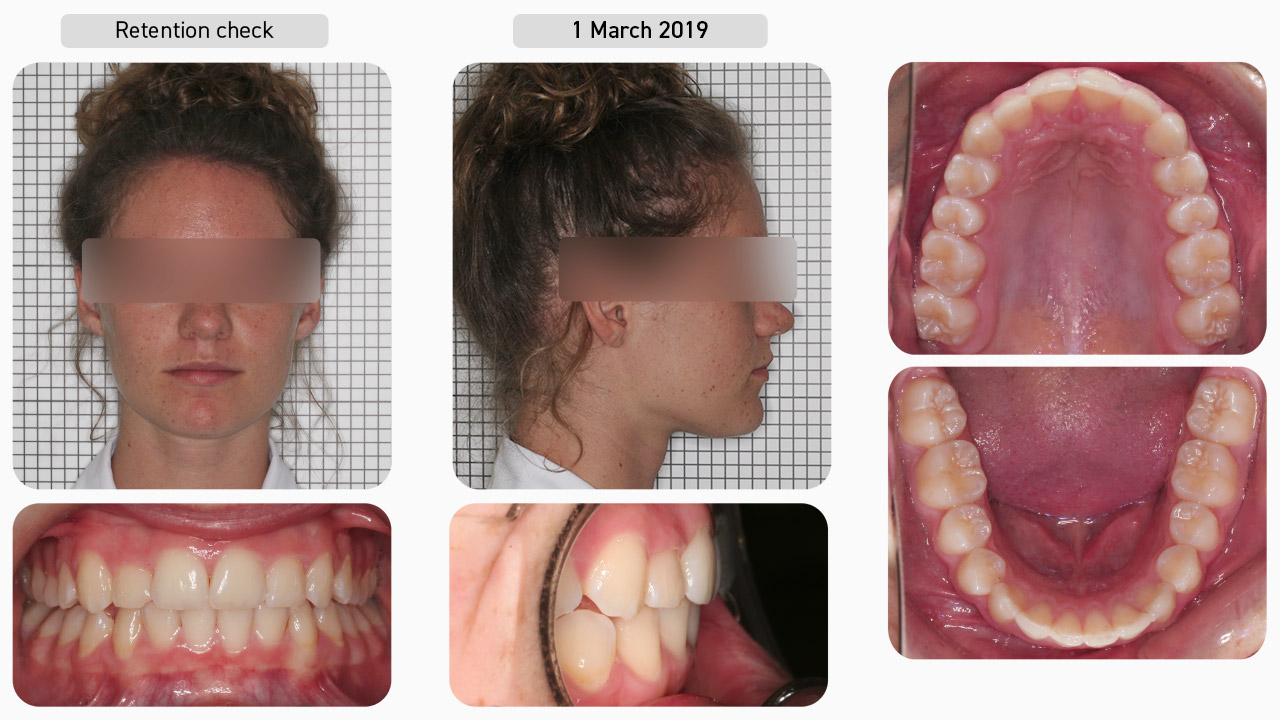
Retention
The patient returned approximately eight months later for a retention check and the result has been maintained without the use of any fixed retainers. With the correct breathing and myofunctional habits continuing, we expect this stability to continue into the future.
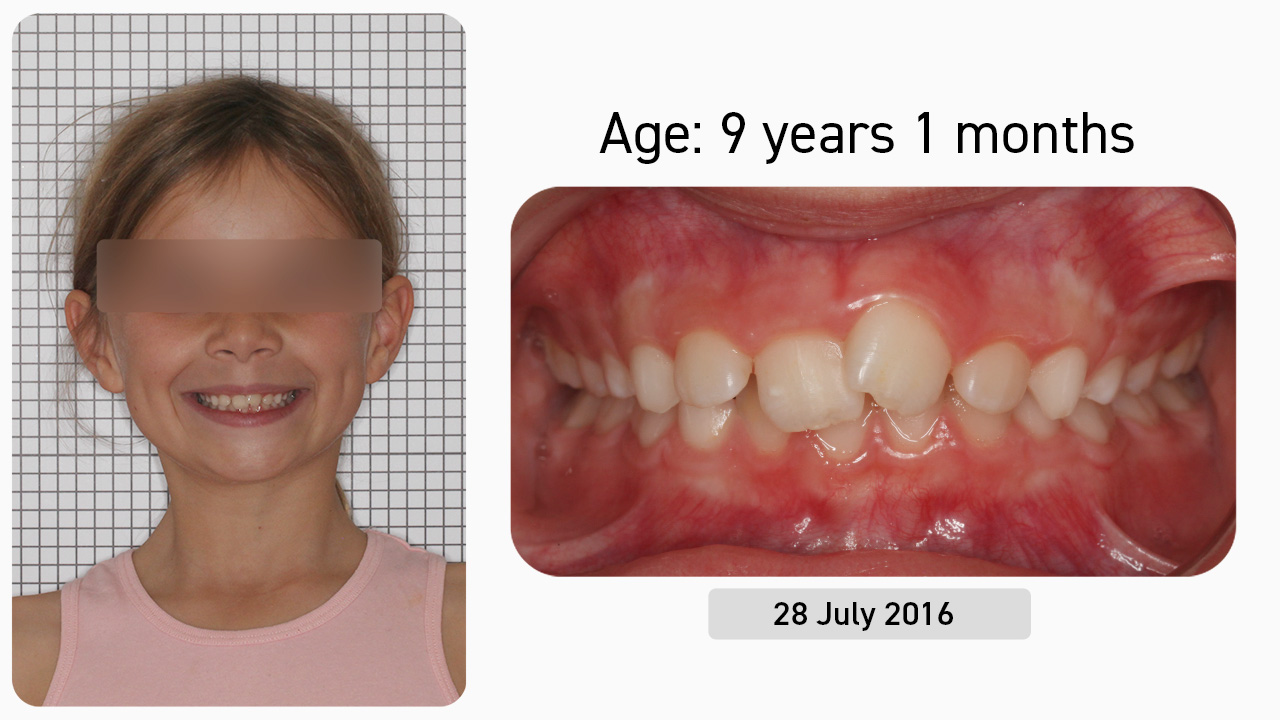
Case Study 3
This nine-year-old female patient presented with the chief complaint of crowded upper front teeth and was seeking early intervention. After being presented with the various treatment options, the decision was made to undertake Myobrace® treatment, involving the use of a series of Myobrace® appliances and the Myobrace® Activities, in conjunction with the BWS arch expansion appliance.
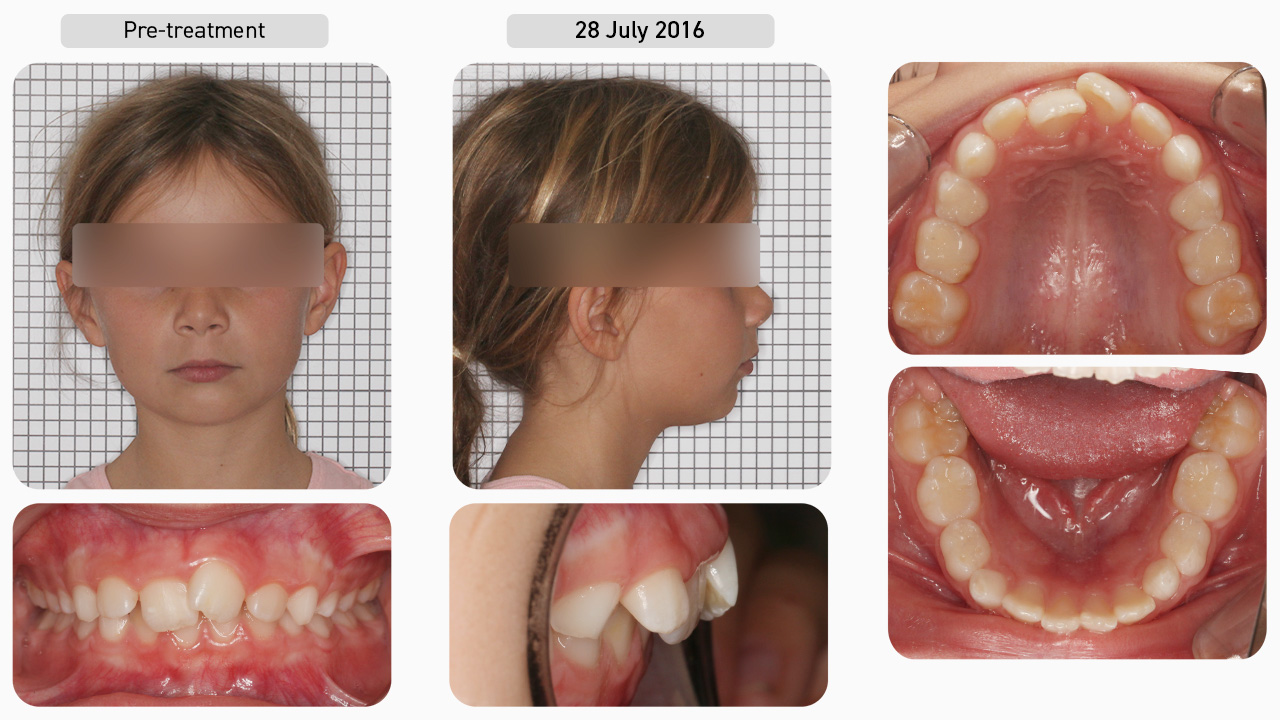
Pre-treatment
Using the Myofunctional Orthodontic Evaluation (MOE) form, we documented that this patient had underdeveloped upper and lower jaws, narrow and flattened arches, along with moderate dental crowding. There is also increased overbite and overjet, and her poor myofunctional habits included mouth breathing with some snoring, low tongue posture and reverse swallow. Since she was in the mixed dentition, her treatment began with the Myobrace®for Kids series.
Dental Progression
She started with the K1 appliance to establish nasal breathing and begin the correction of myofunctional habits. Three months later, her breathing function had improved, and she was consistently retaining the K1 overnight, so she progressed onto the K2 appliance which focuses on arch development and continued habit correction. You can already see the improvement in the alignment of the upper and lower anterior teeth after only three months of treatment. To enhance the development of the upper arch, the decision was made to use the BWS. As this must be combined with a first stage appliance, the K1 was reissued to the patient.
Dental Progression
After two months of BWS expansion, the wire was removed and the K2 appliance reissued to the patient. Note the temporary increase in overjet due to development of the upper arch (this is favourable and will be corrected in the next stage of treatment). After a few months of using the K2, the decision was made to enter a second round of expansion with the BWS to further develop the upper arch and improve function.
Dental Progression
Following the second round of BWS expansion, the patient had turned 10 years old and so was issued the T2 appliance. Note again, the temporary increase in overjet and spacing between the upper anterior teeth (again, this is favourable). Once the arches were nicely developed and her habits largely corrected, the patient was moved on to the T3 appliance for further dental alignment and, finally, given the T4 appliance for retention. It’s important to note that despite the significant improvement in the arch forms, alignment, occlusion and (most importantly) function, there is still some minor malocclusion as a slight overjet remains. In Myobrace® treatment, this is not a concern because we are not seeking dental 'perfection', rather natural alignment, which occurs in conjunction with habit correction. With good function established, we expect to continue to see improvements as the patient grows and more permanent teeth erupt into the arches.
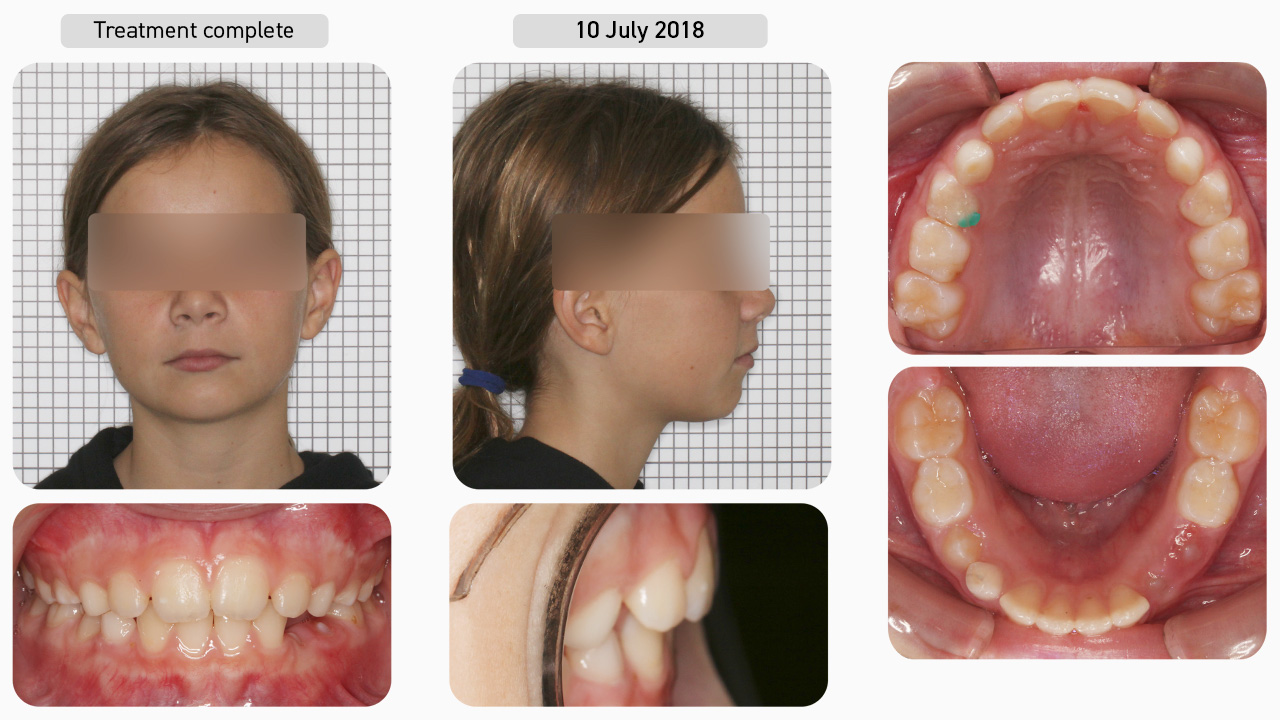
Treatment Complete
Once the goals of Myobrace® treatment had been achieved (establishing nasal breathing, correcting the myofunctional habits and attaining good arch forms), the patient then entered into the retention phase. This involved the use of the T4 appliance to retain the arch form, alignment and habits, so that she can continue to develop correctly.
Facial Progression
Once breathing and myofunctional disorders are corrected, the development of the face continues in the correct downward and forward direction. The buccinators reduced in size and the labiomental crease also shallowed, both as a result of correcting the swallow pattern. With good breathing and muscle function established, we expect the patient’s remaining development to continue in a favourable manner.
Treatment Summary
Using the Myobrace® appliances in conjunction with the BWS and the Myobrace® Activities, we have helped the patient to establish nasal breathing, correct her myofunctional habits and, therefore, achieve natural alignment of the teeth appropriate for her dental developmental age. The arches are broader and rounder, and the occlusion has improved. With the correct breathing and muscle habits maintained, we expect the face and teeth to continue to develop in the right direction, with good stability into the future.

Case Study 4
This 13-year-old male patient presented with the chief complaint of protruding front teeth and an overjet. The patient has previously had treatment with an orthodontist who did upper arch expansion with a fixed expansion appliance. The patient wanted his protruding front teeth and overjet corrected, but he did not want fixed braces or anything that was visible in the mouth. After being presented with the various treatment options, the decision was made to undertake Myobrace® treatment, involving the use of a series of Myobrace® appliances and the Myobrace® Activities.
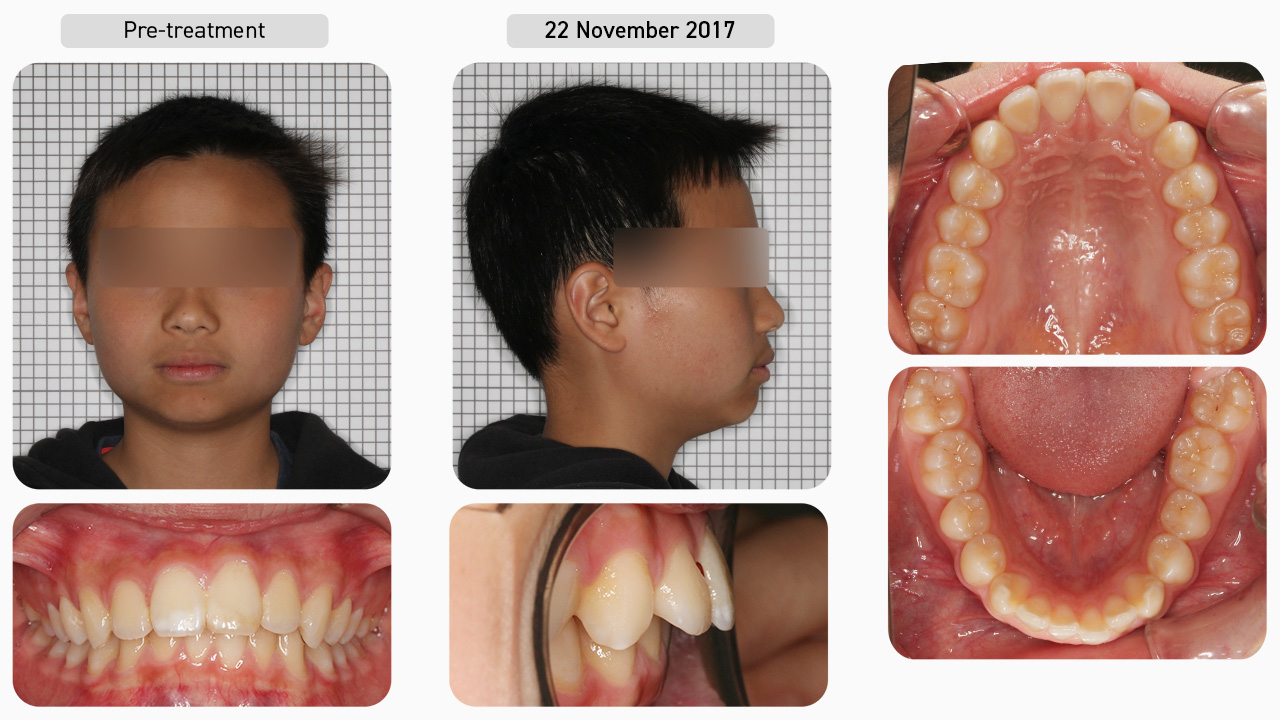
Pre-treatment
Using the Myofunctional Orthodontic Evaluation (MOE) form, we documented that this patient had a narrow upper arch (despite the previous arch expansion) with tipped in posterior teeth and proclined upper incisors. The mandible was retruded, with increased overbite and overjet, and mild dental crowding of the lower anterior teeth. His poor myofunctional habits included mouth breathing, low tongue posture and a reverse swallow. Since he was in the permanent dentition, he was treated with the Myobrace® for Teens series.
Dental Progression
Treatment began with the T1 appliance to establish nasal breathing and begin the correction of myofunctional habits. Two months later, his breathing function had improved, and he was consistently retaining the T1 overnight, so he progressed onto the T2 appliance which focuses on arch development and continued habit correction. You can already see the improvement in alignment of the lower anterior teeth and reduction in overjet after only two months of treatment. The patient remained on the T2 appliance for the majority of treatment while continuing to work through the Myobrace® Activities to correct his myofunctional habits. Notice the significant improvement in the upper arch form and reduced overbite and overjet. Once his myofunctional habits were largely corrected, the patient was issued the T4 appliance for retention.
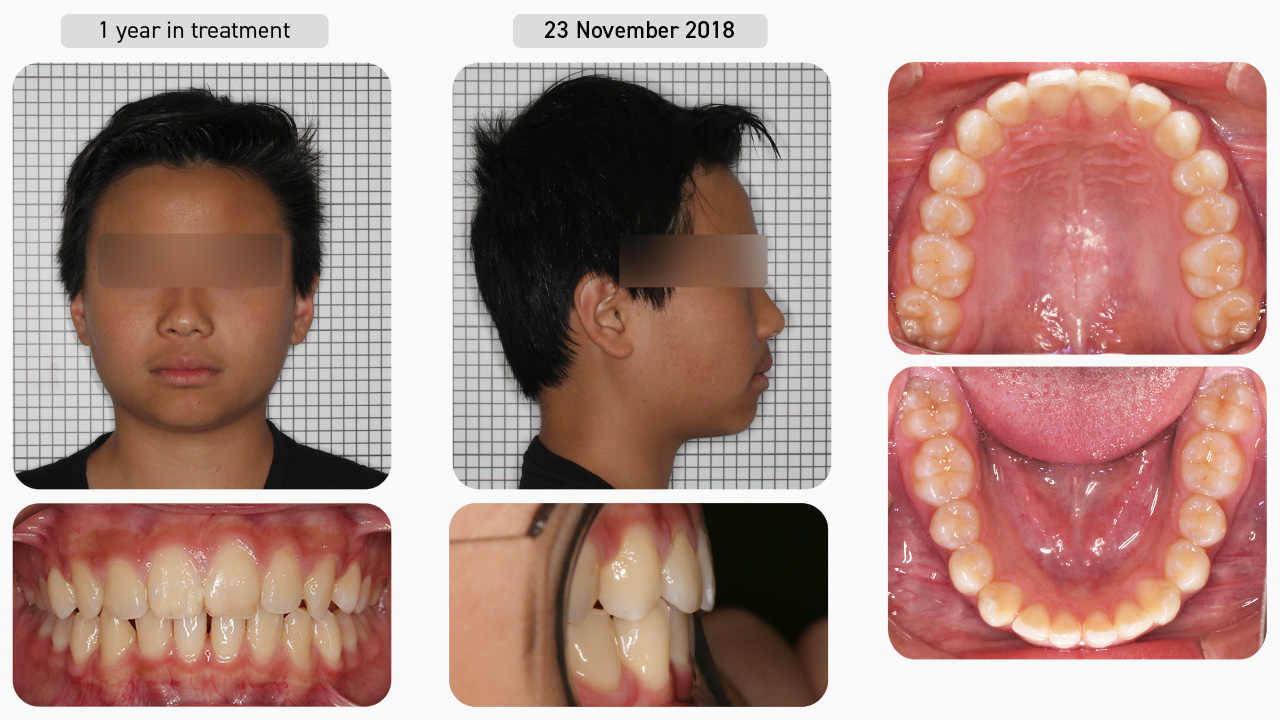
Treatment Complete
After only one year of treatment, the goals of Myobrace® treatment have been achieved (establish nasal breathing, correct the poor myofunctional habits and attain good arch forms). Both the upper and lower arches are broad and round, the teeth are well aligned, and the increased overbite and overjet is resolved. At this point, the patient entered into the retention phase, which involved the use of the T4 appliance to retain the arch forms, alignment and correct habits so that he can continue to develop correctly.

Facial Progression
Now that the breathing and myofunctional disorders have been corrected, not only have the teeth and jaws aligned, but improvements can also be seen in the facial profile. The mandible has moved forward and the airway and posture have both improved. With good breathing and muscle function established, we expect the patient’s remaining development to continue in a favourable manner.
Resources
Appliance Instructions
Downloadable pdf document with instructions specifically for the T1.
Download ResourceMyobrace® Appliance Catalogue
Downloadable pdf document detailing the Myobrace® appliance range.
Download Resource